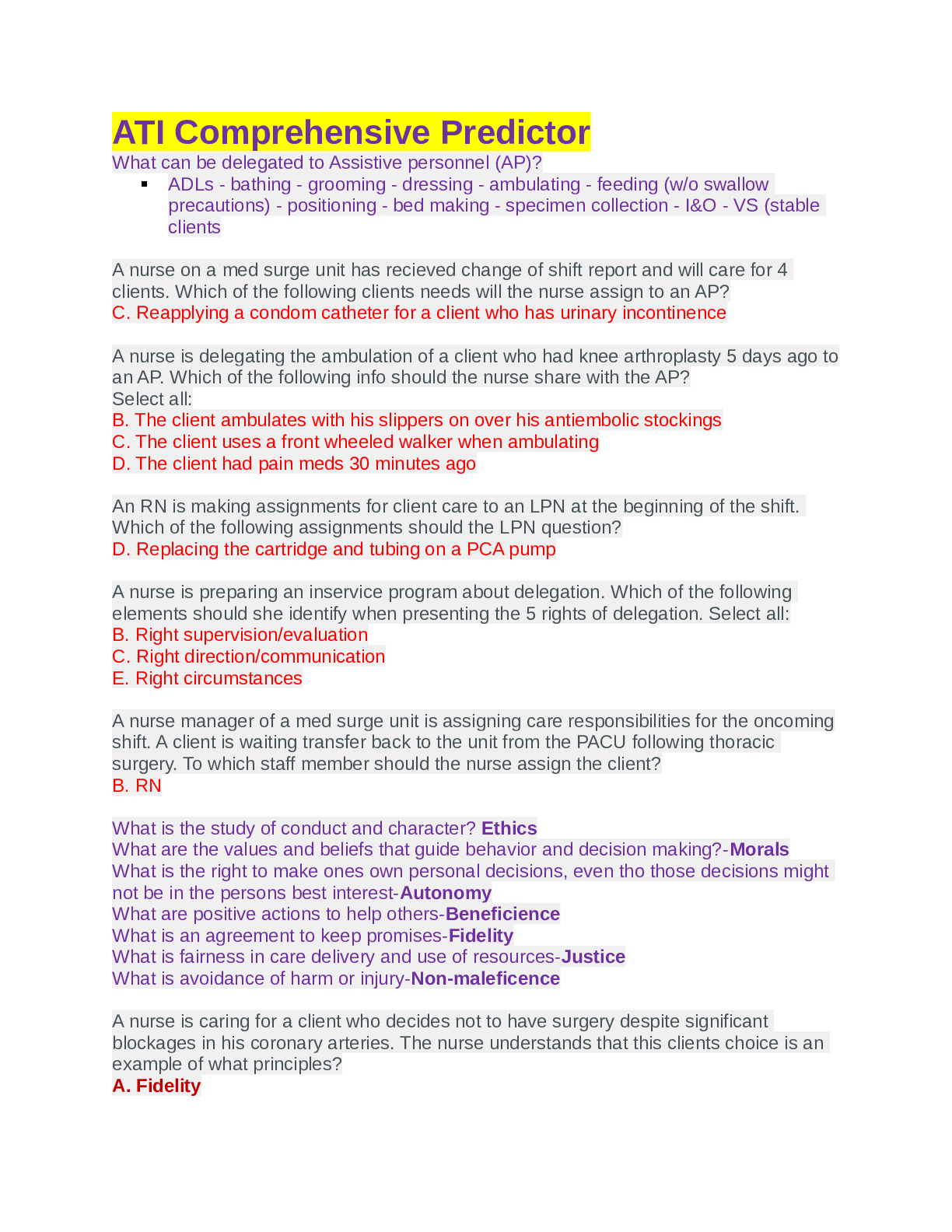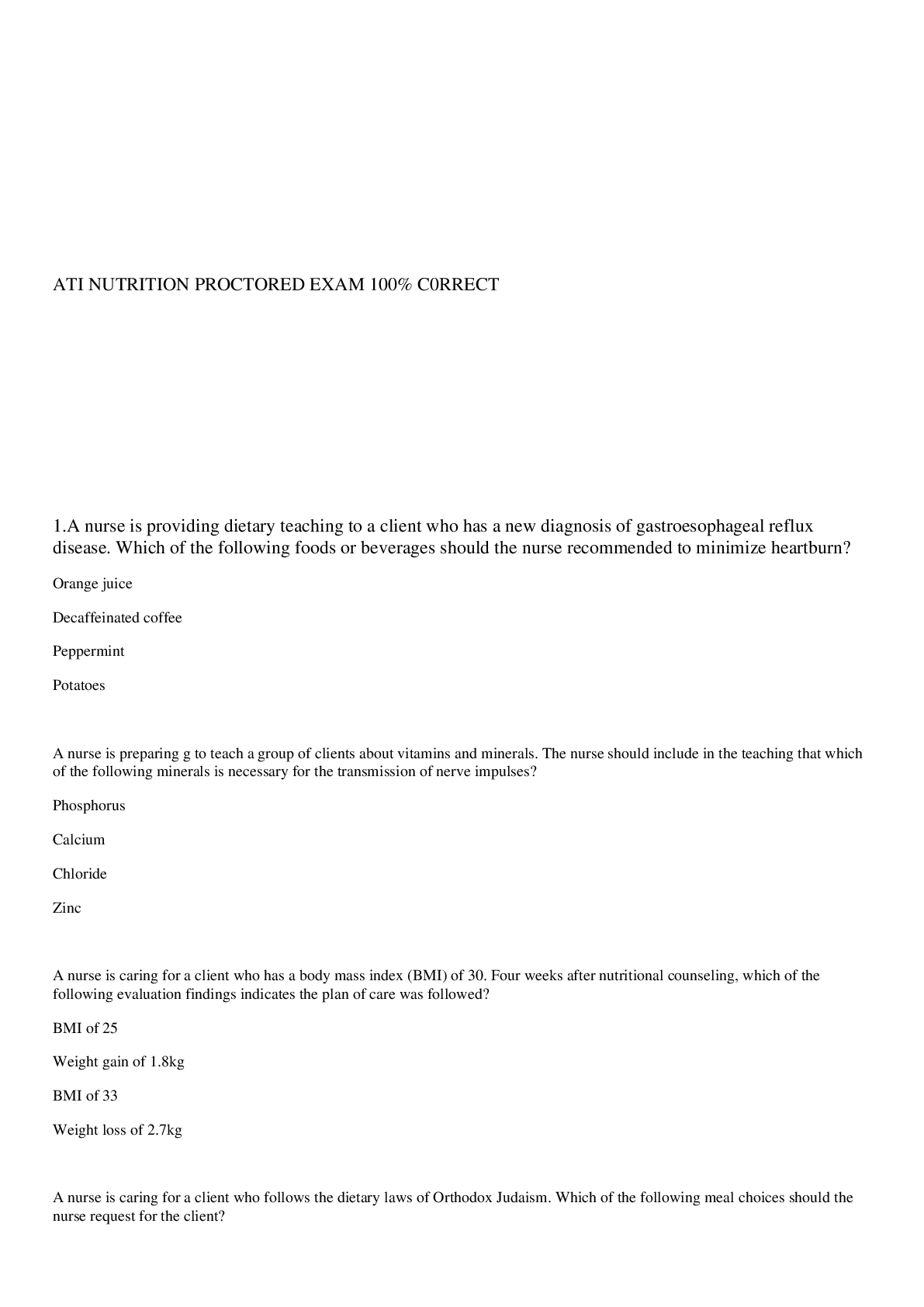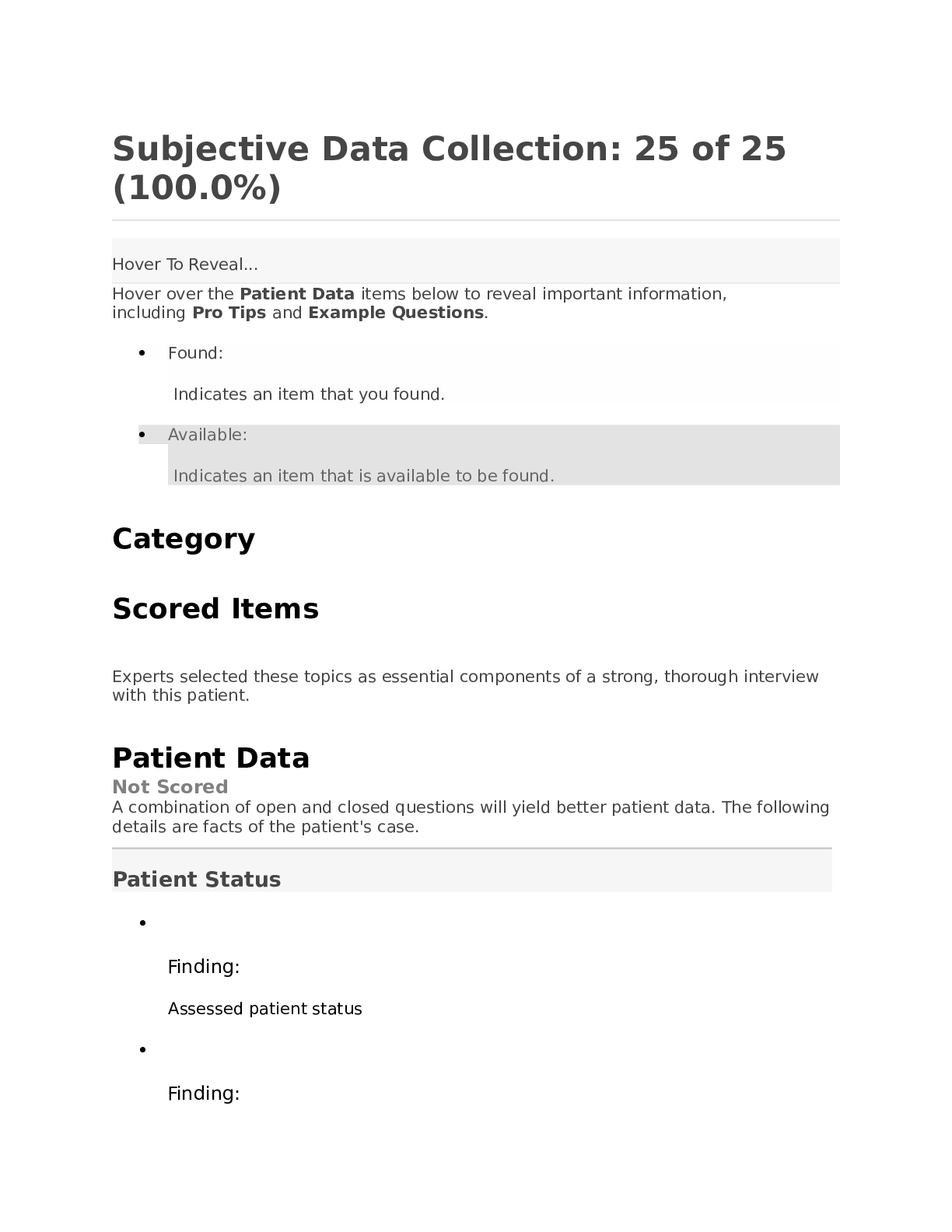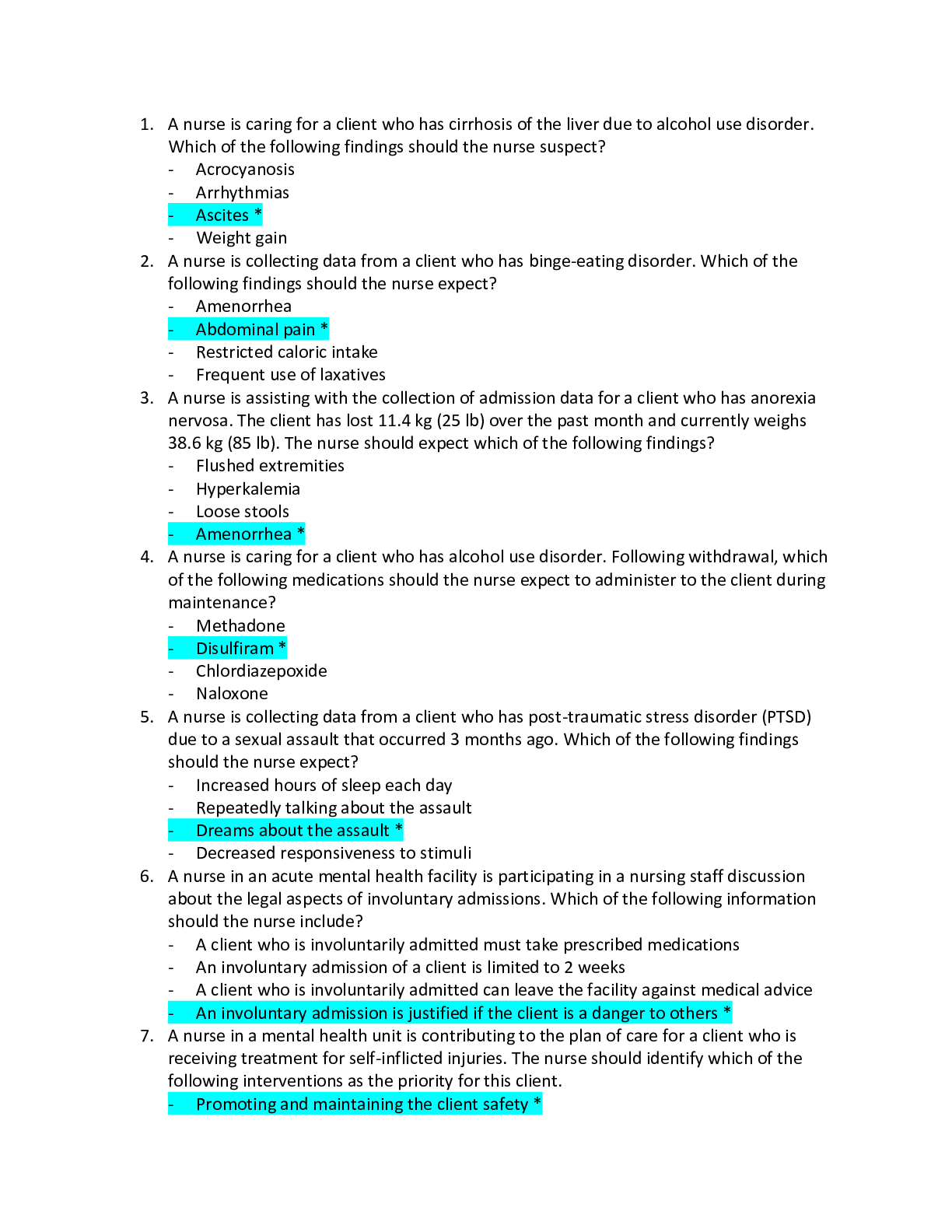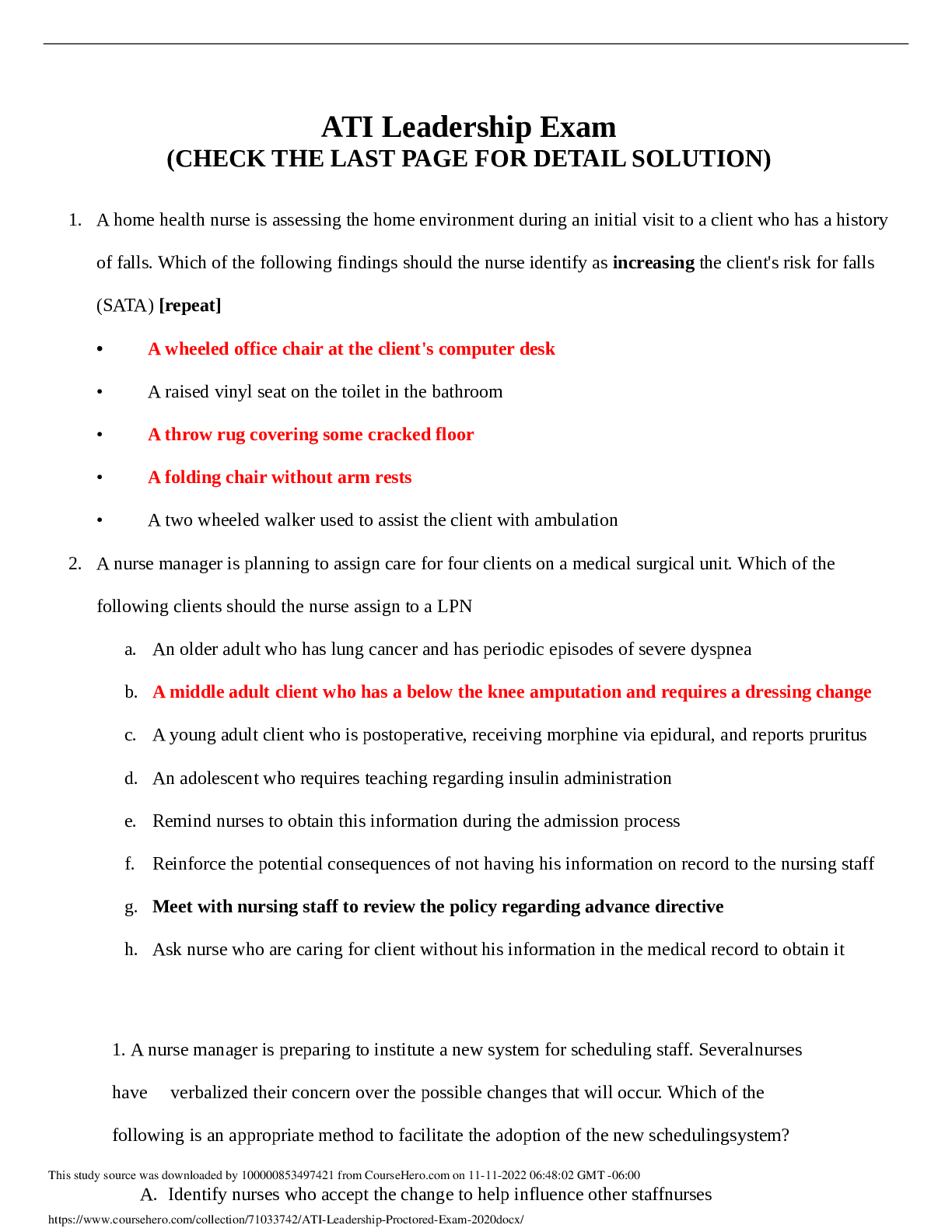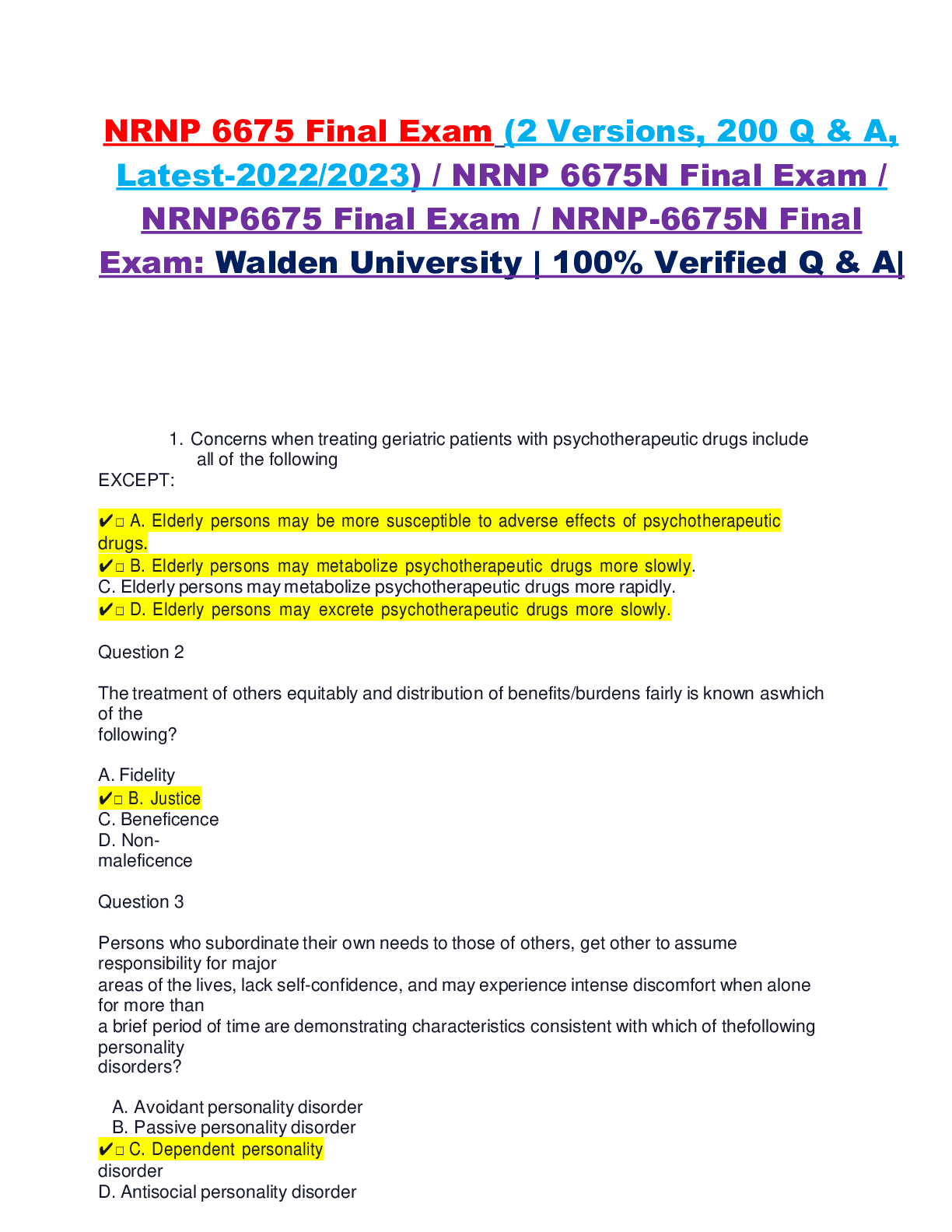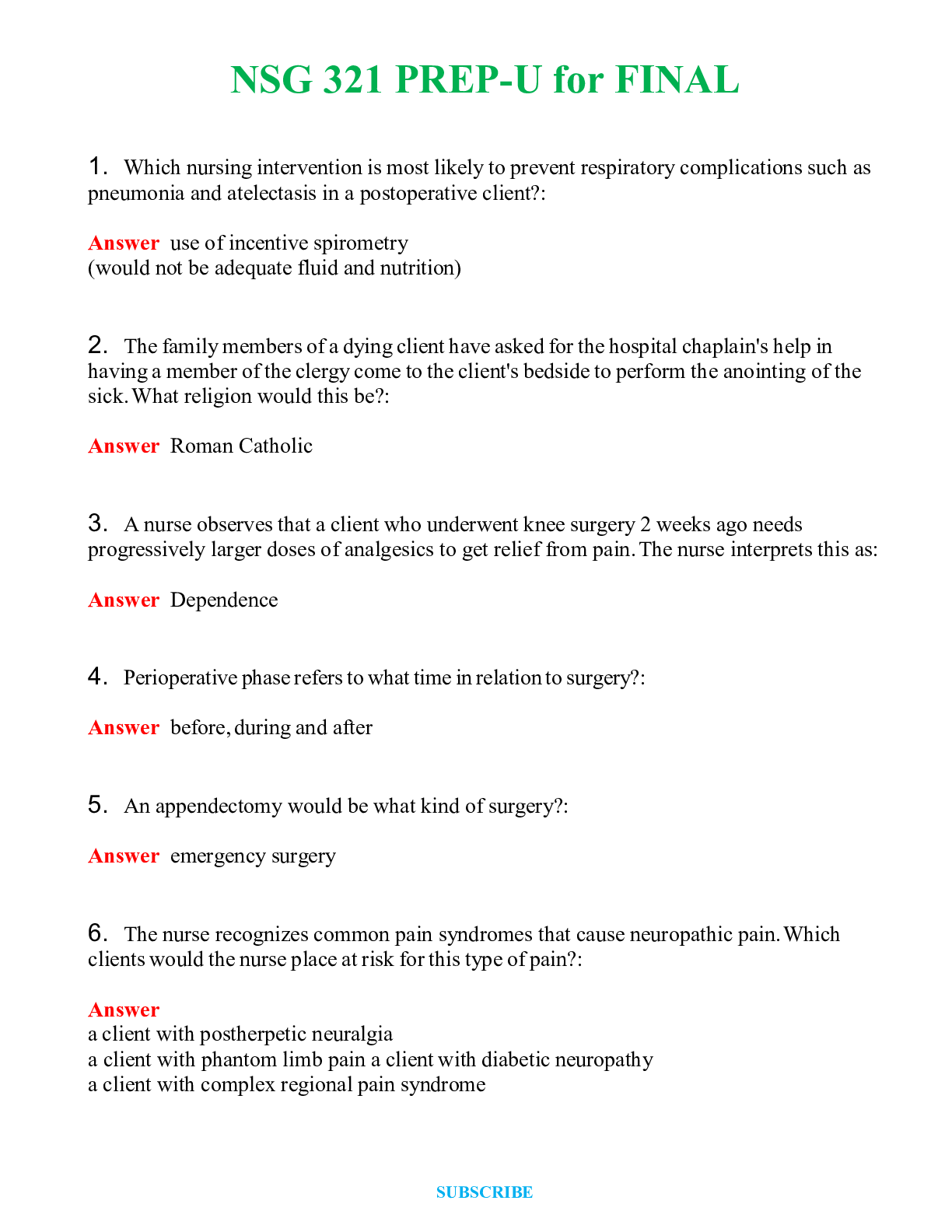FINANCIAL MARKETS AND INSTITUTIONS TEST BANK
Document Content and Description Below
FINANCIAL MARKETS AND INSTITUTIONS TEST BANK 1) Financial markets and institutions 2) Financial market activities affect 1) Financial markets and institutions A) involve the movement of huge quantitie... s of money. B) affect the profits of businesses. C) affect the types of goods and services produced in an economy. D) do all of the above. E.)do only A and B of the above. 2) Financial market activities affect A) personal wealth. B) spending decisions by individuals and business firms. C) the economy's location in the business cycle. D) all of the above. 3) Markets in which funds are transferred from those who have excess funds available to those who have a shortage of available funds are called A) commodity markets. B) funds markets. C) derivative exchange markets. D) financial markets. 4) The price paid for the rental of borrowed funds (usually expressed as a percentage of the rental of $100 per year) is commonly referred to as the A) inflation rate. B) exchange rate. C) interest rate. D) aggregate price level. 5) The bond markets are important because A) they are easily the most widely followed financial markets in the United States. B) they are the markets where interest rates are determined. C) they are the markets where foreign exchange rates are determined. D) all of the above. 6) Interest rates are important to financial institutions since an interest rate increase the cost of acquiring funds and the income from assets. A) decreases; decreases B) increases; increases C) decreases; increases D) increases; decreases 7) Typically, increasing interest rates A) discourages individuals from saving. B) discourages corporate investments. C) encourages corporate expansion. D) encourages corporate borrowing. E) none of the above. 8) Compared to interest rates on long-term U.S. government bonds, interest rates on fluctuate more and are lower on average. A) medium-quality corporate bonds B) low-quality corporate bonds C) high-quality corporate bonds D) three-month Treasury bills 9) Compared to interest rates on long-term U.S. government bonds, interest rates on three-month Treasury bills fluctuate _ and are on average. A) more; lower B) less; lower C) more; higher D) less; higher 10) The stock market is important because A) it is where interest rates are determined. B) it is the most widely followed financial market in the United States. C) it is where foreign exchange rates are determined. D) all of the above. 11) Stock prices since the 1980s have been A) relatively stable, trending upward at a steady pace. B) relatively stable, trending downward at a moderate rate. C) extremely volatile. D) unstable, trending downward at a moderate rate. 12) The largest one-day drop in the history of the American stock markets occurred in A) 1929. B) 1987. C) 2000. D) 2001. 13) A declining stock market index due to lower share prices A) reduces people's wealth and as a result may reduce their willingness to spend. B) increases people's wealth and as a result may increase their willingness to spend. C) decreases the amount of funds that business firms can raise by selling newly issued stock. D) both A and C of the above. E) both B and C of the above. 14) Changes in stock prices A) affect people's wealth and their willingness to spend. B) affect firms' decisions to sell stock to finance investment spending. C) are characterized by considerable fluctuations. D) all of the above. E) only A and B of the above. 15) (I) Debt markets are often referred to generically as the bond market. (II) A bond is a security that is a claim on the earnings and assets of a corporation. A) (I) is true, (II) false. B) (I) is false, (II) true. C) Both are true. D) Both are false. 16) (I) A bond is a debt security that promises to make payments periodically for a specified period of time. (II) A stock is a security that is a claim on the earnings and assets of a corporation. A) (I) is true, (II) false. B) (I) is false, (II) true. C) Both are true. D) Both are false. 17) The price of one country's currency in terms of another's is called A) the foreign exchange rate. B) the interest rate. C) the Dow Jones industrial average. D) none of the above. 18) A stronger dollar benefits and hurts . A) American businesses; American consumers B) American businesses; foreign businesses C) American consumers; American businesses D) foreign businesses; American consumers 19) A weaker dollar benefits and hurts . A) American businesses; American consumers B) American businesses; foreign consumers C) American consumers; American businesses D) foreign businesses; American consumers 20) From 1980 to early 1985 the dollar in value, thereby benefiting American . A) appreciated; businesses B) appreciated; consumers C) depreciated; businesses D) depreciated; consumers 21) In general, from 2001 through 2013, the dollar in value relative to major foreign currencies. A) appreciated B) depreciated C) remained about the same 22) Money is defined as A) anything that is generally accepted in payment for goods and services or in the repayment of debt. B) bills of exchange. C) a riskless repository of spending power. D) all of the above. E) only A and B of the above. 24) The central bank of the United States is A) Citicorp. B) The Fed. C) Bank of America. D) The Treasury. E) none of the above. 25) Monetary policy is chiefly concerned with A) how much money businesses earn. B) the level of interest rates and the nation's money supply. C) how much money people pay in taxes. D) whether people have saved enough money for retirement. 26) Economists group commercial banks, savings and loan associations, credit unions, mutual funds, mutual savings banks, insurance companies, pension funds, and finance companies together under the heading financial intermediaries. Financial intermediaries A) act as middlemen, borrowing funds from those who have saved and lending these funds to others. B) produce nothing of value and are therefore a drain on society's resources. C) help promote a more efficient and dynamic economy. D) do all of the above. E) do only A and C of the above. 27) Economists group commercial banks, savings and loan associations, credit unions, mutual funds, mutual savings banks, insurance companies, pension funds, and finance companies together under the heading financial intermediaries. Financial intermediaries A) act as middlemen, borrowing funds from those who have saved and lending these funds to others. B) play an important role in determining the quantity of money in the economy. C) help promote a more efficient and dynamic economy. D) do all of the above. E) do only A and C of the above 28) Banks are important to the study of money and the economy because they A) provide a channel for linking those who want to save with those who want to invest. B) have been a source of financial innovation that is expanding the alternatives available to those wanting to invest their money. C) are the only financial institution to play a role in determining the quantity of money in the economy. D) do all of the above. E) do only A and B of the above. 29) Banks, savings and loan associations, mutual savings banks, and credit unions A) are no longer important players in financial intermediation. B) have been providing services only to small depositors since deregulation. C) have been adept at innovating in response to changes in the regulatory environment. D) all of the above. E) only A and C of the above. 30) (I) Banks are financial intermediaries that accept deposits and make loans. (II) The term "banks" includes firms such as commercial banks, savings and loan associations, mutual savings banks, credit unions, insurance companies, and pension funds. A) (I) is true, (II) false. B) (I) is false, (II) true. C) Both are true. D) Both are false. 31) was the stock market's worst one-day drop in history in the 1980s. A) Black Friday B) Black Monday C) Blackout Day D) none of the above 32) The largest financial intermediaries are A) insurance companies. B) finance companies. C) banks. D) all of the above. 33) In recent years A) interest rates have remained constant. B) the success of financial institutions has reached levels unprecedented since the Great Depression. C) stock markets have crashed. D) all of the above. 34) A security A) is a claim or price of property that is subject to ownership. B) promises that payments will be made periodically for a specified period of time. C) is the price paid for the usage of funds. D) is a claim on the issuers future income. 35) are an example of a financial institution. A) Banks B) Insurance companies C) Finance companies D) All of the above CONTINUED.....................DOWNLOAD FOR BEST SCORES [Show More]
Last updated: 1 year ago
Preview 1 out of 31 pages
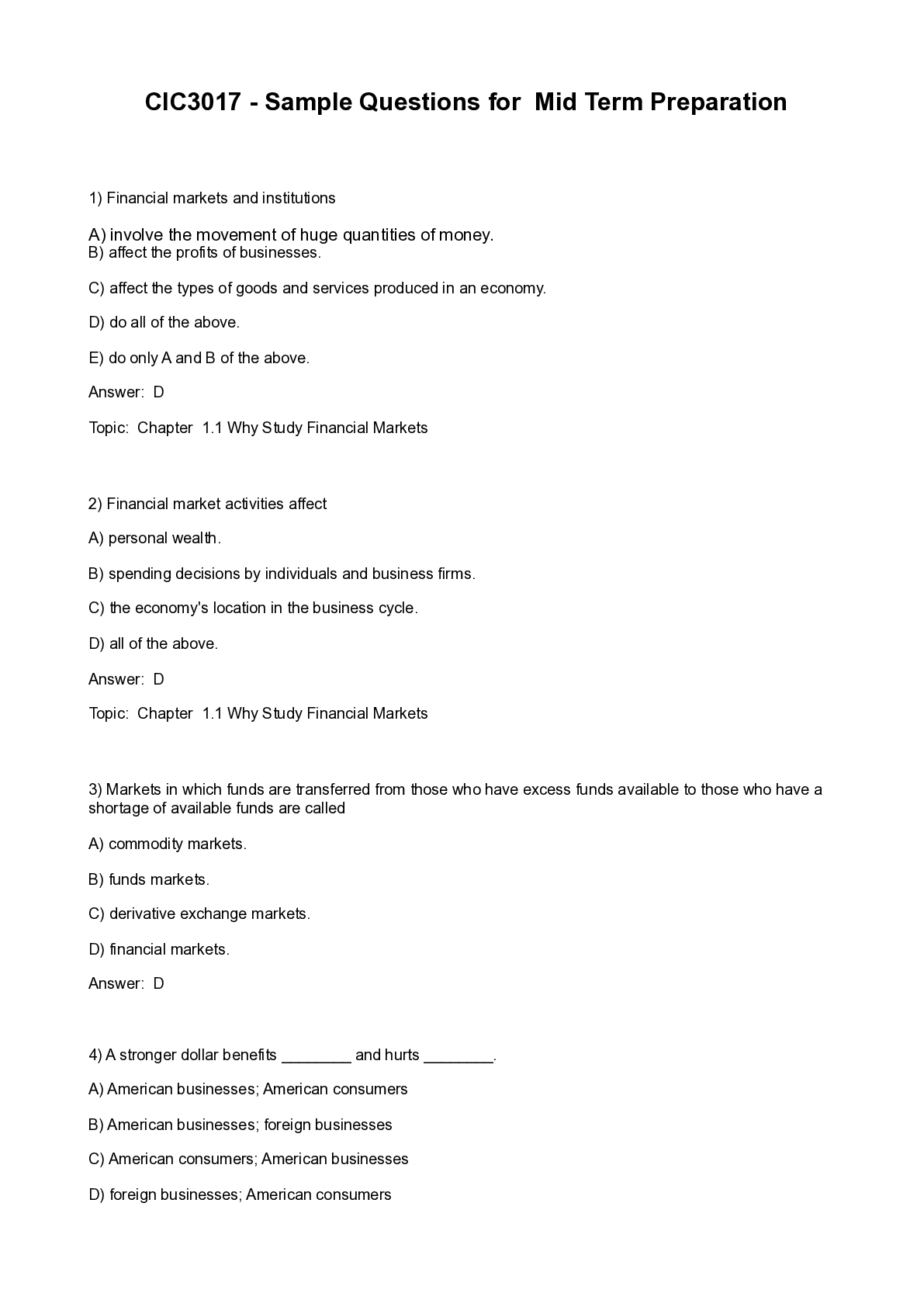
Reviews( 0 )
Document information
Connected school, study & course
About the document
Uploaded On
Nov 09, 2021
Number of pages
31
Written in
Additional information
This document has been written for:
Uploaded
Nov 09, 2021
Downloads
0
Views
125

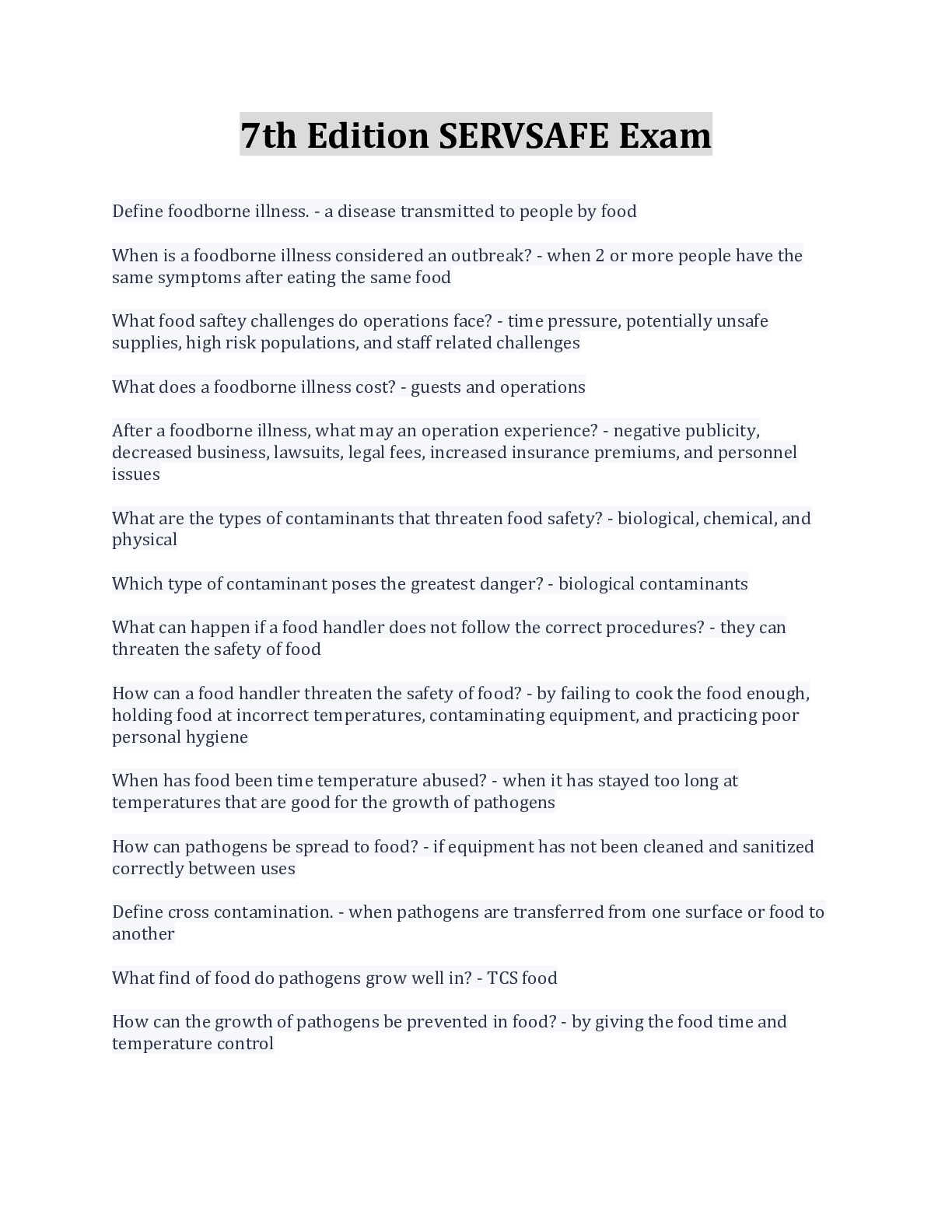
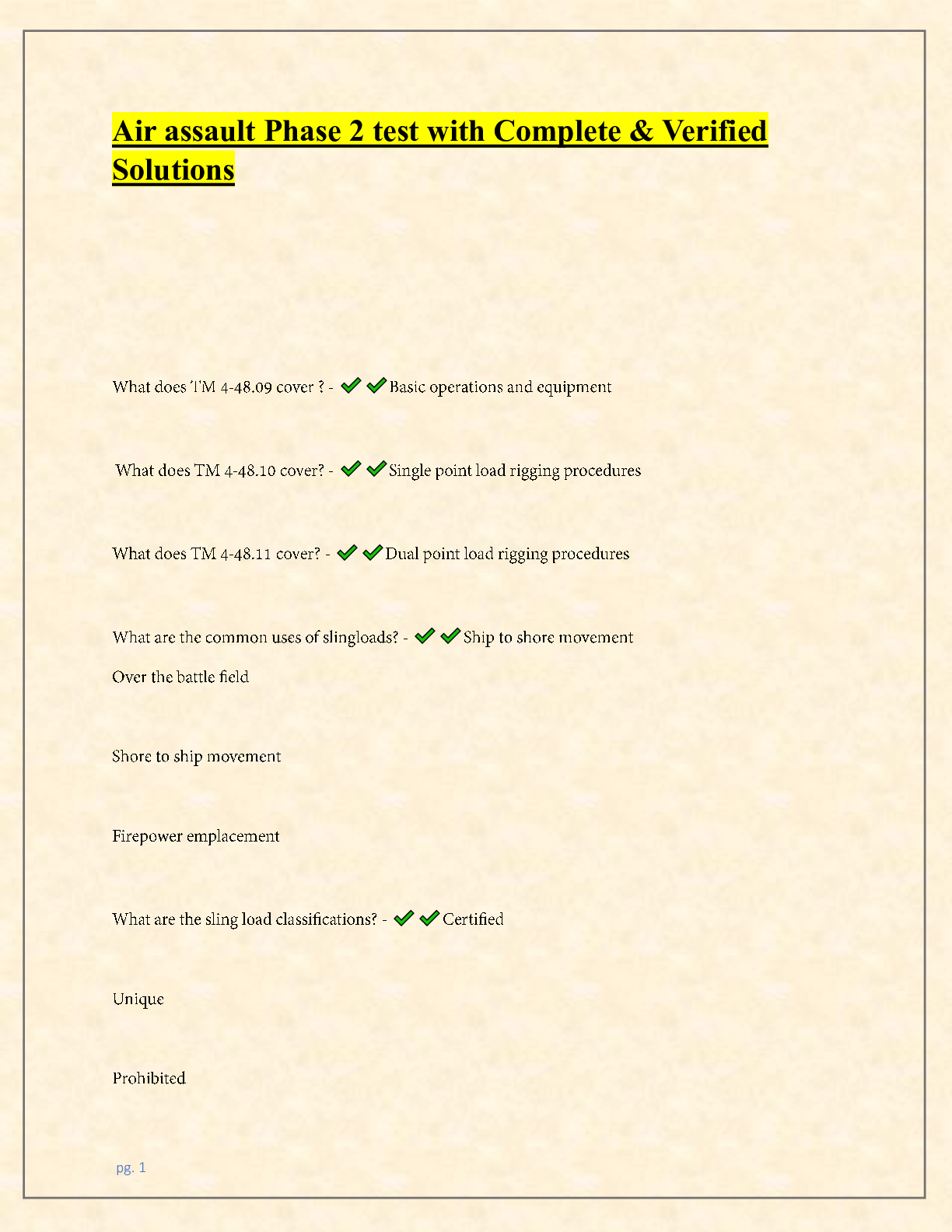

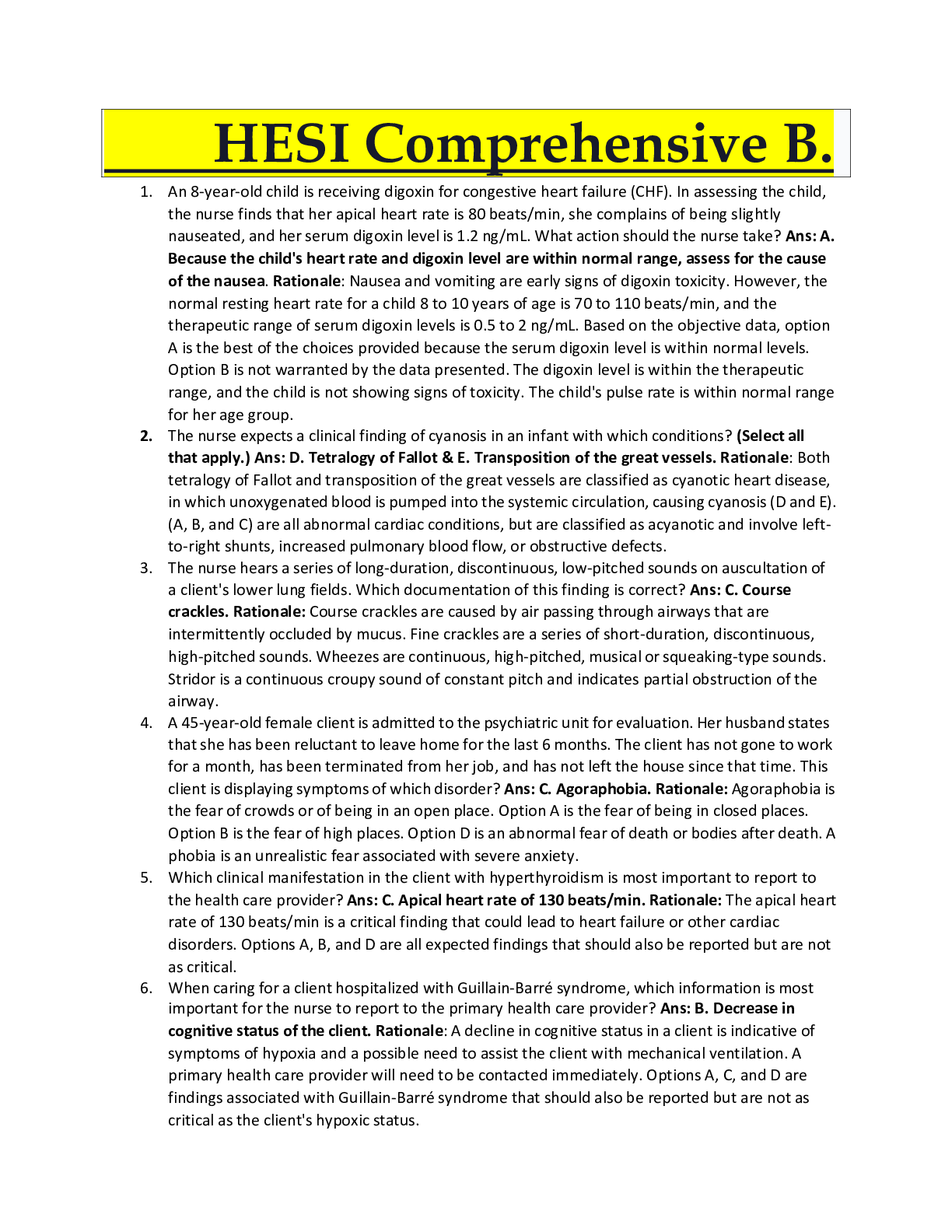
.png)
